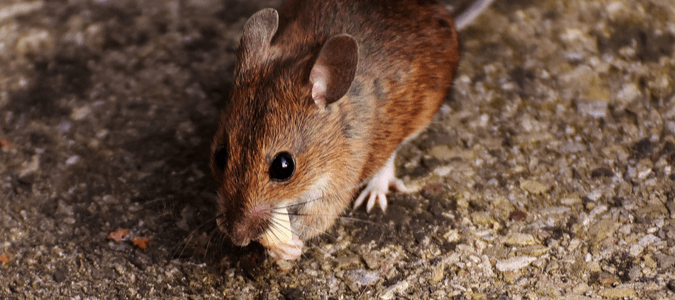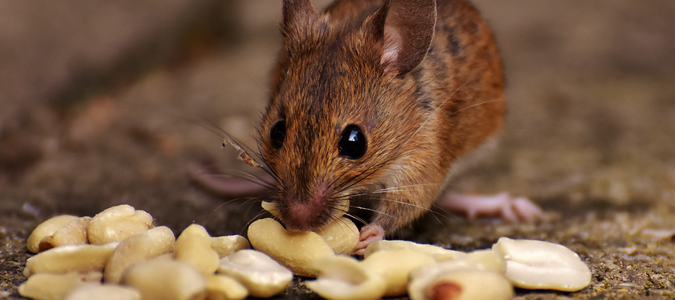Can Mice Come Through Floor Vents?

Mice can squeeze through surprisingly tiny spaces—even holes as narrow as the width of a pencil. This is one reason they are so good at getting into people’s homes. Pest control specialists know these pests can get through tiny gaps around doors, windows, hose bibs and exterior vents. But can mice come through floor vents? The answer is yes—they can definitely come through floor vents. Let’s find out how and why.
First, let’s look at why mice come into people’s homes in the first place. These pests come into our houses instead of staying outside in the wild where they belong because they are searching for warmth, shelter, water and food. Unfortunately, people’s houses typically provide all of these basic needs. If mice can get in, they will.
This is especially true during times of the year when these rodents have a harder time finding what they need to thrive in the wild. For example, mice may have difficulty finding enough water outside in the blistering summer heat. In the dead of winter, both food and warm shelter are in short supply.
Mice are opportunistic eaters. This means they eat whatever they can find. Out in the wild, they typically eat fruits, nuts, seeds and grains. They also eat small animals. When they get into our homes, they continue their habits of eating whatever they can find. This might include foods they find in the pantry or kitchen counter or pet food in bowls.
Mice that infest a home typically stay hidden. They build their nests in dark, sheltered spots, such as inside a wall void or behind a kitchen appliance. Mice are nocturnal, so they venture out mostly at night to find food and water.
How Mice Get Around Your Home
These small pests are wary of potential threats and predators, so they prefer to use dark corridors to get around safely in their search for food. Inside a home, this might include air ducts and crawl spaces. It also includes floor vents, which are dark and protected. These qualities make them the perfect passageway for mice to use in their search for food.
Keep in mind that mice are also great climbers. They can climb up a perfectly vertical wall, as long as it has a little texture for their tiny claws to grip onto. For all these reasons, mice can certainly come through a floor vent.
The trouble is, you might never catch a mouse in the act of coming through the vent. Again, these pests are extremely wary of predators, and they are most active at night. This means they usually stay hidden during daylight hours when people are most active. Even at night, they creep around in hidden spaces rather than coming out in the open. This is why it’s important to be vigilant about other signs of mice in the home.
Signs of Mouse Activity
Here are some of the most common signs of mouse activity inside the house or garage:
- Rodent droppings. Mouse droppings are brownish-black in color and roughly the size and shape of cooked grains of rice. You might spot these in the pantry, near foods the mice have been eating, or underneath appliances. On top of cabinets, behind cardboard storage boxes and in the corner of the garage are other common spaces for finding mouse droppings.
- Gnaw marks. Mice have long front teeth that are constantly growing. They need to gnaw frequently to keep these teeth filed down. You might spot gnaw marks on baseboards, cabinets or plastic pipes.
- Chewed-through food items. If you have a mouse visiting your pantry, you might see food boxes and bags that have been chewed through. You might also see scattered food crumbs, especially crackers, cereal and flour.
- Shredded nesting materials. Mice like to use shredded paper, cardboard, fabric and even fiberglass insulation to build their nests. If you find these scattered around your home, garage or attic, it could mean there is a nest nearby.
- A musty or unpleasant smell. Mouse urine smells like ammonia, so your home may start to smell as an infestation grows larger. A distinctly musty or sour smell could signify a mouse infestation.
If you notice these signs of possible mouse activity in your home, it’s time to contact a pest control specialist. Since mice breed so quickly, time is of the essence. Rather than prolonging the problem by trying to find the nest on your own and setting out traps, it’s wise to enlist professional help.
An experienced pest control professional can locate the nest and the entry points the mice have used to get into your home. They can eliminate the nest, close off the entry points and recommend steps you can take in the future to keep mice away.

How to Catch a Mouse in the House
It’s common to spot signs of mice in the home but never actually see them. Mice typically don’t venture out in daylight. They are most active at night, under the cover of darkness. Even then, they avoid coming out into the open. They are timid and wary creatures that prefer to stay hidden as much as possible. If you’ve been noticing signs of rodent activity, you may be wondering how to catch a mouse in the house. Be aware that there are things you can do to catch these pests, but it’s usually more efficient to hire professional help.
If you think you have only one or two mice on your hands, you may be successful with setting out traps. It’s important to know the best practices for setting up mouse traps correctly. This will help to ensure that you will actually catch them. It’s also important to remember that setting traps yourself may not be helpful if you have a full-blown infestation.
How to Effectively Use Traps
Here’s what to keep in mind when setting up traps to catch a mouse:
- The first important step is to set out multiple traps, not just one. Setting several traps no more than 10 feet apart will increase the chances of a mouse encountering one of them.
- It’s also important to make sure you’re setting the traps in places with high mouse activity. Put them in places where you’ve spotted rodent droppings and gnaw marks, such as inside the pantry or in the garage.
- Keep in mind that setting out traps in the middle of a room or garage won’t work since mice don’t usually like to venture out in the open. Instead, set them next to the wall and in corners. This will make it more likely that mice will encounter the traps as they run along the wall.
- Peanut butter and other nut-based products make great bait for mice, but make sure you use the right amount. If you put too much in the trap, it makes it easier for the mice to steal the bait without setting off the trap. Just a pea-sized amount in a trap is plenty to attract mice and encourage them to investigate.
- Finally, set out traps where mice will encounter them, but pets and children won’t. This is a very important aspect of mouse control, and it’s one of the biggest reasons people hire professional help when dealing with a mouse problem. A pest control specialist has the training and experience needed to set the right type and number of traps in the right spots. This will keep your family and pets safe while the mouse problem is eliminated.
Trapping mice is just one aspect of rodent control. If mice are active in your home or on your property, there is likely to be a nearby nest. This is why methods like using moth balls to keep mice away are ineffective when dealing with mice. Female mice have numerous babies, which means their nests grow fast. A pest control professional can help with all aspects of mouse control, including setting traps, controlling the nest and closing off access points to the home.

What to Do if You Find a Baby Mouse in the House
Finding a baby mouse in the house can be alarming, but it can also tug at your heartstrings. Baby mice are pests, but it’s easy to feel sorry for these small and defenseless creatures when they are separated from their mothers. Still, it is important to remember that finding a baby mouse strongly indicates an active nest nearby. It’s a pretty good sign that you are dealing with a hidden mouse infestation somewhere in your home.
Mice breed incredibly quickly. This is one of the reasons it’s so important to have your home inspected by a pest control specialist if you find a baby mouse or if you notice other signs of mouse activity. A female mouse can have 30 or more babies in a year—which means just a few mice can quickly become a big problem.
Keep in mind that mice are far from harmless. They can cause property damage with their urine, feces and frequent gnawing. Mice carry harmful bacteria and diseases that can make people sick. They contaminate any foods and surfaces that they touch. These are just a few reasons it’s so important to deal with it quickly and completely when you think you may have a mouse problem.
Keeping Mice Away
Homeowners can do a lot to keep mice away from their homes. Keeping your kitchen very clean and making sure to wipe up spills and crumbs goes a long way. So does keeping all food items in airtight containers and emptying out pets’ food and water bowls at night so mice can’t access them. It’s also important to keep trash and compost in bins with tightly fitting lids, both inside and outside the house. Close off any little holes or gaps in the outside of your home so mice can’t use them to get inside.
These steps will help keep mice away, but if you have an active infestation in your home, it’s time to seek professional help. A pest control professional has the best methods and tools for keeping rodent pests away from your home. They can resolve mouse problems quickly and efficiently.
Chem-free Can Control the Mice on Your Property
There are many reasons why you don’t want mice on your property. Chem-free can create a thorough rodent treatment plan to get rid of these creatures. We can keep mice out of your bed and off your property. This way, you and your family members can feel at ease at home again.

